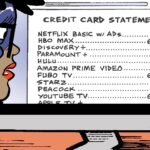TV measurement is reaching an inflection point.
The past few months have been packed with partnerships, acquisitions and debate, as alternative measurement providers start to gain a foothold at Nielsen’s expense.
But there’s at least one thing most competing measurement providers can agree on: the importance of independent accreditation.
“I’m a big believer in accreditation,” said Nielsen CEO David Kenny, speaking at AdExchanger’s Industry Preview in NYC last week.
Nielsen lost its Media Rating Council seal for national and local TV ratings over the summer, after undercounting audiences during the pandemic.
Since then, Nielsen has been actively working to regain its accreditation and plans to seek the separate accreditation for Nielsen ONE, its cross-screen measurement product.
“I fully intend to have an accredited Nielsen ONE,” Kenny said.
Nielsen ONE entered alpha testing in December, just a few months after Nielsen lost its MRC accreditation for national and local TV ratings.
Crossing that bridge
Advertisers have been asking for cross-platform measurement for over a decade, Kenny said, but the industry also needs “to be able to evaluate cross-media audiences on common metrics.”
And the need for a single standard is becoming even more critical as fragmentation increases competition.
“The pie is getting bigger,” Kenny said in reference to the business opportunities created by newer forms of TV inventory, such as streaming.
But advertisers and their agencies will still need a way to determine whether they got what they paid for. “And [they] haven’t spoken yet,” added Kenny, who claims Nielsen has “five times as many data scientists as the next five competitors combined.”
Although broadcasters are pushing for multiple currencies, “multiple currencies mean multiple standards,” Kenny said, “[which] makes agencies’ jobs much harder – and that’s dangerous for [all] players in media.”
Kenny argued the answer is a single standard. The cheese stands alone.
Regardless, programmers are unequivocally opening up the floodgates to the new competition in town: alternative measurement providers.
The alt take
And programmers are signing up with alt measurement providers despite their lack of an MRC seal.
“Not one TV or video product is accredited right now,” VideoAmp CEO and founder Ross McCray recently told AdExchanger.
Still, “accreditation is important,” he said, noting that VideoAmp has plans to undergo the lengthy MRC accreditation process.
“We have to make sure we’re hearing what customers are looking for,” McCray said. “It doesn’t help if no one’s accredited.”
Third-party accreditation also filters out providers that don’t have what it takes, he said, and streamlines the business for those that do. Accredited companies don’t have to spend as much time answering questions about transparency from potential partners if they’ve been through the MRC process.
But, speaking of time, obtaining accreditation takes quite a while.
And in the meantime, there are other ways to be transparent, build trust and crack open the black box, McCray said.
Sharing the actual backend code with clients is one way of establishing trustworthiness while waiting for the golden stamp of third-party approval.
A company can tell clients what it’s doing, but if “you’re not showing the source code, you could be lying through your teeth,” McCray said.
“Our clients in production are using our code themselves – they call for our code and get measurement back,” he said. “They have complete transparency on what’s going on.”
In McCray’s view, the future of measurement will consist of multiple providers but only one leader, not unlike how multiple SSPs vie for the top spot – but Google is clearly way ahead.
“Some [companies] go out of business, some sell, some pivot — then you get to a clear two or three, like Google [and Amazon or PubMatic],” McCray said, referring to the most commonly used SSPs.
The same goes for DSPs, he said, which “keep dwindling.”
“There are few now, and [there are] big differences between first, second and third place,” McCray said. “It’ll [all] come down to market adoption and choice.”
This article has been edited.















